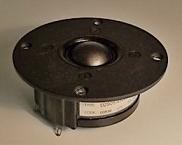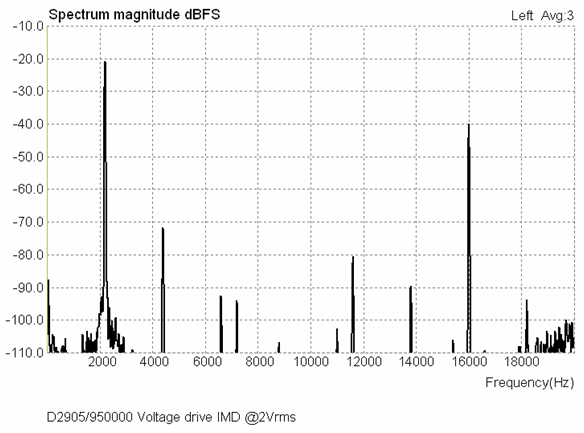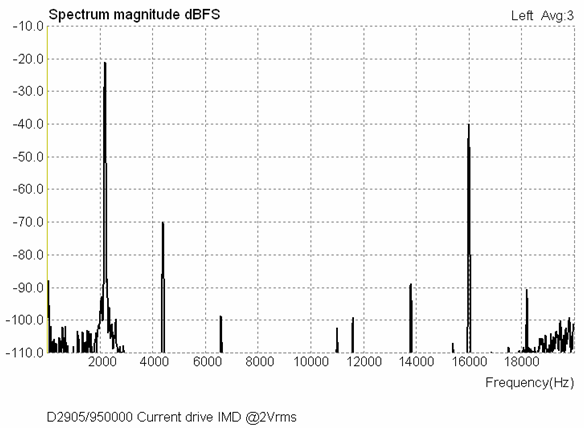Distortion example: a 1" dome tweeter
 Dome tweeters also benefit from current-drive though their measurable distortions are usually lesser than those in lower frequency drivers.
Dome tweeters also benefit from current-drive though their measurable distortions are usually lesser than those in lower frequency drivers.
In the following is a comparison of modulation distortion taken from a 1" textile dome tweeter Scan-Speak D2905/950000. The unit has a conventional ferrite magnet motor structure with ferrofluid and a rear chamber; the resonant frequency being 550 Hz.
Below is shown an amplitude spectrum of modulation distortion obtained on voltage drive. The test signal consists of two sine waves at frequencies 2200 Hz (f1) and 16 kHz (f2) with voltage proportion 6:1. (Due to impedance variation, the proportion of currents differs from this a little.) The signal level was set for 2 Vrms, yielding a peak value of 3.2 V.

It is seen how the 16 kHz tone becomes distorted in the presence of the 2200 Hz tone. The most remarkable modulation product is also here at f2-2f1 (11.6 kHz) and is almost 1% in magnitude with respect to the original 16 kHz tone. By taking the other products at f2-f1 (13.8 kHz) and f2+f1 (18.2 kHz) into the power sum we have a full 1%.
In general, such a number at these frequencies may not yet be deemed very bad, but there is an adverse factor: the original tone (16 kHz in this case) may already fall outside the hearing range of the listener while the biggest distortion component (11.6 kHz) is still well within that range.
The corresponding spectrum on current-drive is seen below. The most material modulation distortion component ( f2-2f1) is reduced by over 18 dB.

The two lower peaks (the 2nd-order products) one f1 away from the original tone are, however, not reduced; and the one at f2+f1 (18.2 kHz) actually rises a little. Thus, in some cases the V/I conversion distortion may be luckily working against some form of mechanical distortion. Despite that, the above percentage is reduced to 0.47%.

